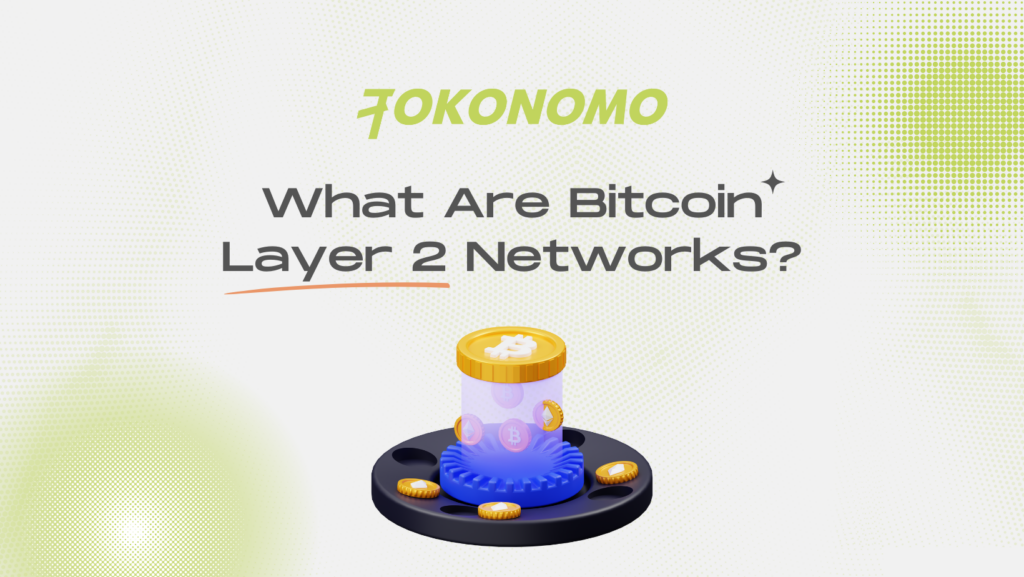Bitcoin, as a pioneering force in the cryptocurrency realm, has solidified its position as the largest and most widely embraced digital currency. However, along with its triumphs, the surge in Bitcoin’s popularity has presented certain hurdles, particularly regarding scalability. To address these obstacles, the cryptocurrency community has introduced Bitcoin Layer 2 networks, a group of protocols specifically engineered to improve scalability, lower transaction fees, and open up new avenues for the Bitcoin ecosystem.
What Are Bitcoin Layer 2 Networks?
Layer 2 protocols for Bitcoin refer to additional protocols constructed above the Bitcoin blockchain. These are usually created to tackle performance challenges or other constraints present in the primary chain. These protocols handle transactions outside the primary blockchain, offering benefits like better scalability, increased programmability, and broader support for different decentralized applications.


What Is The Rationale Behind Bitcoin Layer 2?
Bitcoin’s original vision as a decentralized and secure payment system encountered scalability issues. The block creation time of 10 minutes and throughput of seven transactions per second (TPS) were inadequate during high transaction volumes, resulting in higher fees and delays. Furthermore, Bitcoin’s blockchain, with its limited scripting language, struggled to support complex smart contracts and decentralized applications (DApps). In response, Bitcoin Layer 2 networks emerged as a solution to these challenges.
How Does Bitcoin Layer 2 Networks Work?
Layer 2 solutions function based on the concept of off-chain processing, wherein transactions take place off the primary blockchain, thereby alleviating the burden on Layer 1. By establishing off-chain channels, users can execute numerous transactions without each one needing direct inclusion in the blockchain. This off-chain methodology not only boosts transaction capacity but also reduces fees, rendering microtransactions and point-of-sale transactions more viable.
Bitcoin Layer 2 networks rely on various mechanisms, such as state channels, rollup chains, and sidechains, to facilitate their operation.
1. State Channels
Layer 2 solutions, such as the Lightning Network, leverage state channels to empower users in establishing end-to-end encrypted channels for sending and receiving payments. Transactions conducted within these channels happen off-chain, with only the opening and closing balances being relayed to the main network. This approach helps reduce congestion and enhance efficiency.
2. Blockchain Rollups
Blockchain rollups, including both optimistic and zk-rollups, consolidate multiple transactions off-chain into a single bundle of data before incorporating it into the main blockchain. This strategy not only boosts scalability but also substantially enhances transaction throughput.
3. Sidechains
Independent blockchains, each operating with its unique consensus mechanisms, are connected to Layer 1 through a bidirectional bridge. This bridge facilitates the transfer of assets between the chains, enabling the integration of supplementary Layer 2 solutions and broadening the functionalities of the Bitcoin network.
Examples of Bitcoin Layer 2 Solutions
Several Layer 2 solutions have surfaced within the Bitcoin ecosystem, each playing a role in enhancing scalability and introducing novel functionalities.
Lightning Network
Introduced in 2018, the Lightning Network leverages state channels to enable microtransactions on the Bitcoin Layer-1. It enhances transaction speed and reduces costs by executing numerous transactions off-chain and finalizing the opening and closing balances on the primary blockchain.
Liquid Network
The Liquid Network is a Bitcoin Layer 2 sidechain that enables users to transfer their bitcoins bidirectionally through a two-way peg mechanism. When BTC is sent to the Liquid Network, it is exchanged for Liquid BTC (L-BTC) at a 1:1 ratio. Additionally, the network facilitates the creation of tokens and other digital assets.


Stacks Protocol
This Layer-2 blockchain, previously known as Blockstack, facilitates smart contracts and decentralized applications on the Bitcoin blockchain. Stacks employs microblocks to enhance speed and implements a Proof-of-Transfer (PoX) mechanism, which links transactions to the Bitcoin blockchain.


Applications of Bitcoin Layer 2 Solutions Beyond Scaling
Bitcoin Layer 2 solutions not only tackle scalability issues but also introduce new use cases and functionalities within the Bitcoin ecosystem.
- Enhanced programmability: Layer 2 solutions bring sophisticated smart contract capabilities to the Bitcoin network, allowing for the creation of decentralized finance (DeFi) services, non-fungible tokens (NFTs), and various other Web3 applications.
- Bitcoin DeFi: The implementation of Layer 2 solutions such as the Lightning Network and Stacks plays a crucial role in enabling the expansion of decentralized finance on the Bitcoin blockchain. These solutions enable users to participate in asset management, atomic swaps, borrowing, lending, and trading.
- Addressing the blockchain trilemma: Bitcoin Layer 2 solutions play a pivotal role in overcoming the blockchain trilemma by striking a balance between decentralization, security, and scalability. While the Bitcoin network places a high emphasis on decentralization and security, Layer 2 solutions specifically target scalability challenges.
The Emergence of Layer 2 Networks for Bitcoin
Recently, the importance of Bitcoin Layer 2 networks has been gaining traction, with significant developments suggesting widespread adoption and integration. For instance, in 2023, Coinbase and Binance revealed the successful integration of the Lightning Network, enabling users to leverage layer-2 scaling solutions for Bitcoin deposits and withdrawals. This development highlights the increasing significance of Layer 2 solutions in the broader crypto landscape.
Looking to the future, Bitcoin Layer 2 solutions hold great promise as the sector continues to develop. The crypto community has seen remarkable growth and innovation within the Bitcoin ecosystem, with Layer 2 networks playing a crucial role in propelling this advancement.
Conclusion
The advent of Bitcoin Layer 2 networks has successfully addressed scalability challenges encountered by Bitcoin, offering solutions that not only improve transaction speed and lower fees but also unlock new capabilities. In addition to scalability enhancements, Bitcoin Layer 2 solutions bring about advanced programmability, opening up possibilities for DeFi services, asset management, and other innovations on the Bitcoin blockchain.











